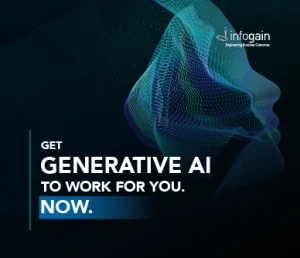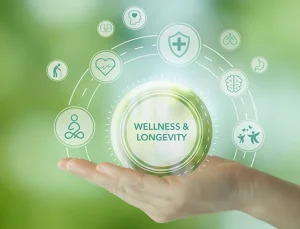- Posted on : September 16, 2020
-
- Industry : Corporate
- Type: Blog
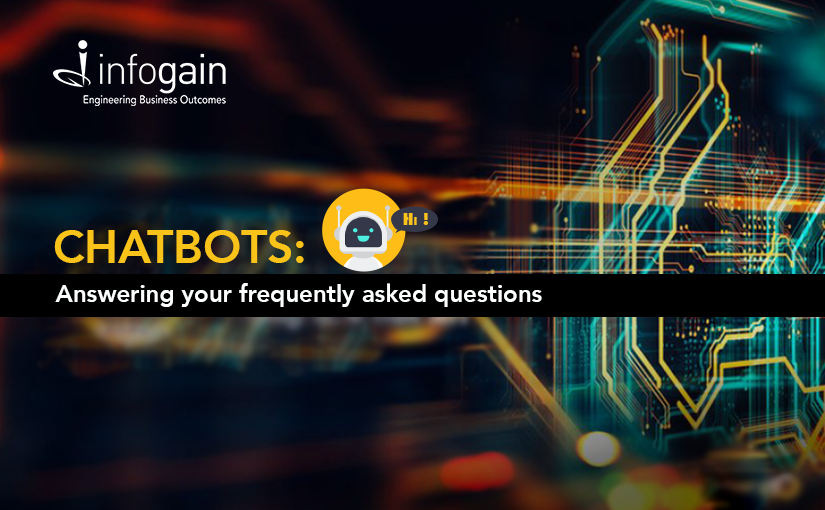
Check out our first in the series of Chatbots Tech Talk that was held on September 8th, hosted by Upakul Barkakaty, and Rajiv Verma from Infogain. Drop us a line at info@infogain.com to request the link to the recording.
Why Chatbots?
When modern customers need information about a product, or if they need a problem solved, they want answers quickly so they can get on with their life. This attitude has driven the demand for self-service and 24/7 customer assistance.
From single-purpose programs that respond to common consumer queries to advanced digital assistants that evolve as they process information, chatbot technologies are making a positive impact on customer service, employee productivity, marketing, and more. According to a study by Gartner, Chatbots will power 85% of all customer service interactions by the year 2020. (That’s now!) In this article, we’ll answer the most frequently asked questions that our customers ask about Chatbots and their benefits.
What is a Chatbot?
A Chatbot is a computer program designed to simulate conversation with human users, especially over the Internet, conducts a conversation via textual or auditory methods.
Chatbots often have many of the same qualities as their human counterparts. They have profile photos, names, can post messages and upload files. Chatbots can even send and receive Direct Messages. Think of Chatbots as just another user, one that can assist you in a variety of ways. As mentioned earlier, the popularity of Chatbots is growing exponentially. According to industry statistics:
- 33% percent of consumers prefer to use Chatbots for purchasing decisions (Drift)
- 80% of businesses want Chatbots by 2020 (Gartner)
- 86 percent of consumers regularly engage with bots (Forrester)
- Chatbots will power 85% of all customer service interactions by the year 2020 (Gartner)
- 70% of people prefer texting rather than calling
“Bots are the new apps,” said Satya Nadella at Microsoft’s BUILD Conference back in 2016 as he predicted the way humans would interact with machines. “People-to-people conversations, people-to-digital assistants, people-to-bots, and even digital assistants-to-bots. That’s the world you’re going to get to see in the years to come.” His prediction came true. In 2020, Chatbots are also conversation enablers that enterprise users can use to interact through text or voice.
Chatbot Implementation
How do Chatbots work?
Chatbots are created in different ways for different purposes.
Chatbots that are based on Functions and Demands are the most limited. These bots respond to specific commands and are only as smart as they are programmed to be.
Chatbots that are based on Machine Learning/ AI have NLP capabilities, can understand language and they keep getting smarter.
Chatbots that are based on Conversational flow:
- Guided Conversational Flow: Proactive in providing visual cues and indicators, including Option Buttons, Links, and Filters to move forward and determine the path. Users are provided with options and suggestions with Chatbots driving the conversational flow.
- Non-Guided (Free-Form) Conversational Flow: Leveraging Natural Language Processing (NLP), Non-Guided Conversational Flow depends on the user to provide enough elaborate information via textual contents. Users ask and provide information freely in text.
Achieving a Conversational Flow Design
A well-designed bot will have a conversation flow that feels natural. The bot should be able to handle the core conversation seamlessly and be able to handle interruptions or switching topic of conversations gracefully with:
- Leaner, Quicker, and simpler conversations to encompass the specific business objective rather than Fat and verbose conversations.
- Efficient/Balanced use of Guided and Free Form techniques
- Conversational Design and Flow adapted and conducive to the Use Case
- Conversations for a normal user and not a language expert. Simple words fit well!
- Will Ask / Confirm with the user when in doubt
- Simpler and engaging UI / UX
Chatbot Landscape
What are Chatbot Frameworks and Chatbot Platforms?
Bot Frameworks are where bots are built, and where their behavior is defined. Bot Platforms are online ecosystems where chatbots can be deployed and interact with users, perform actions on their behalf, including interacting with other platforms. There are a number of Bot frameworks and platforms to choose from:
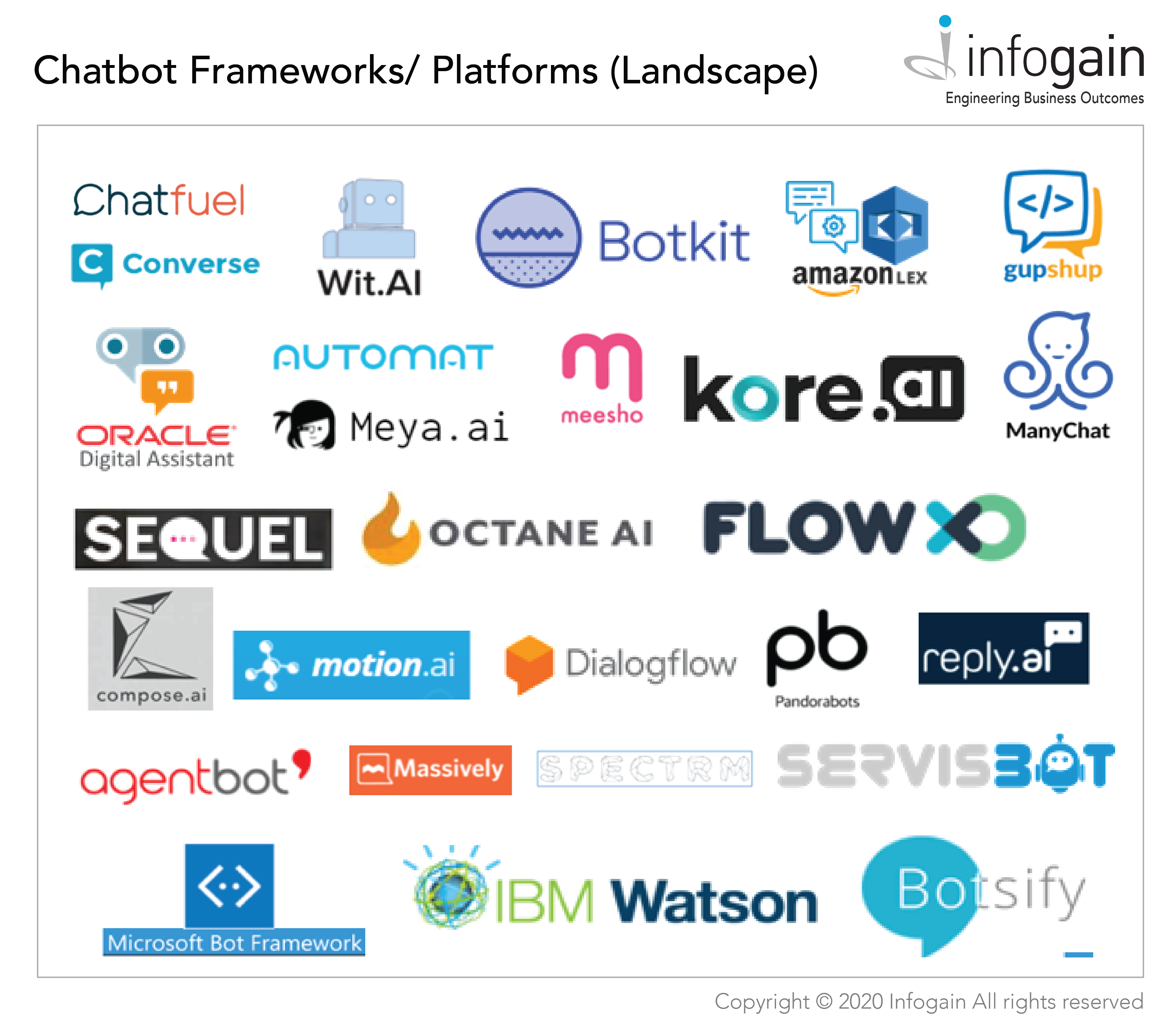
What is the best interaction channel for my chatbot?
The best interaction channel for bots are where the users are!
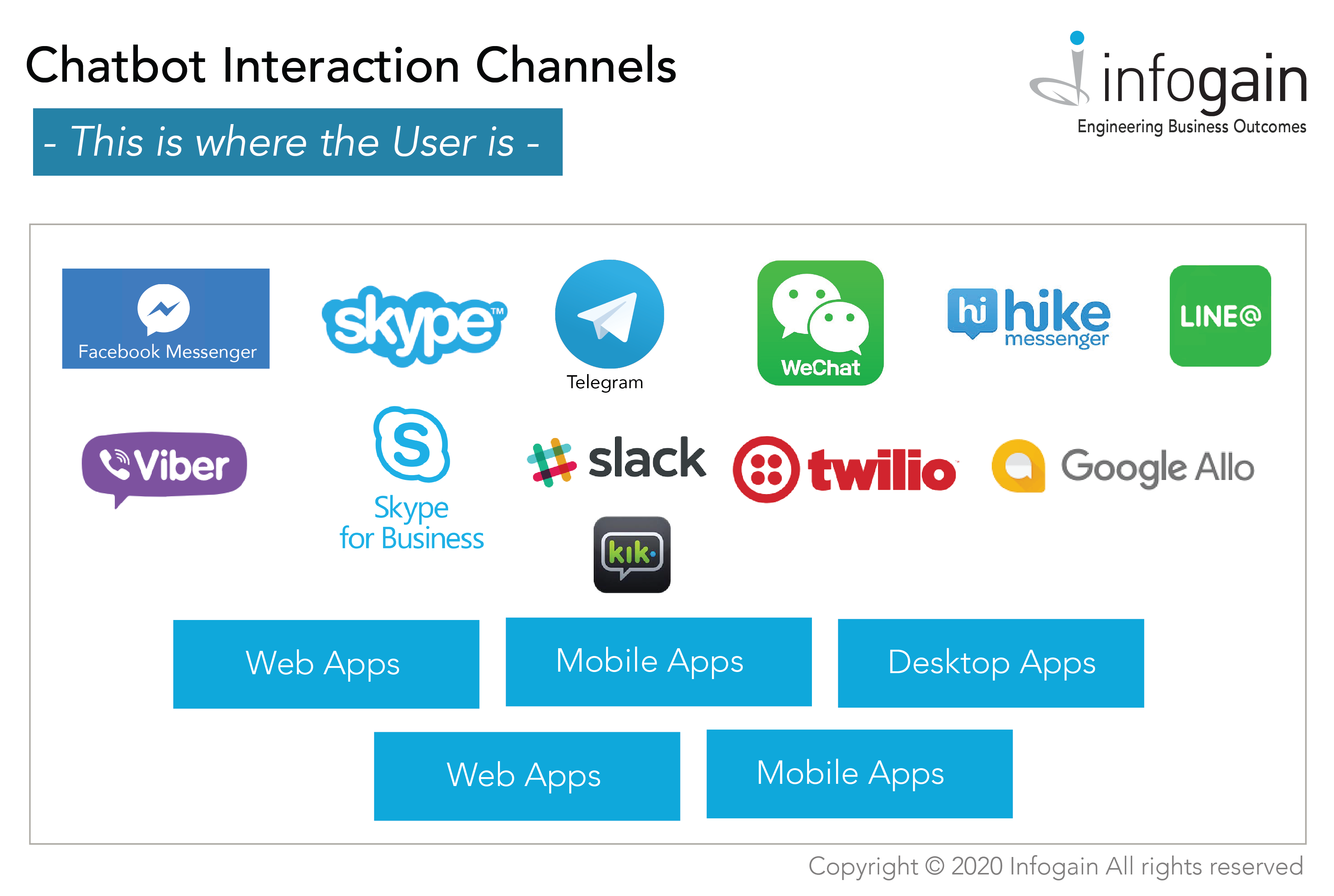
What is the best way to get data from Chatbots?
As bots “mature”, analyzing user data is the next important step. Infogain recommends the analytics tools in the diagram below:
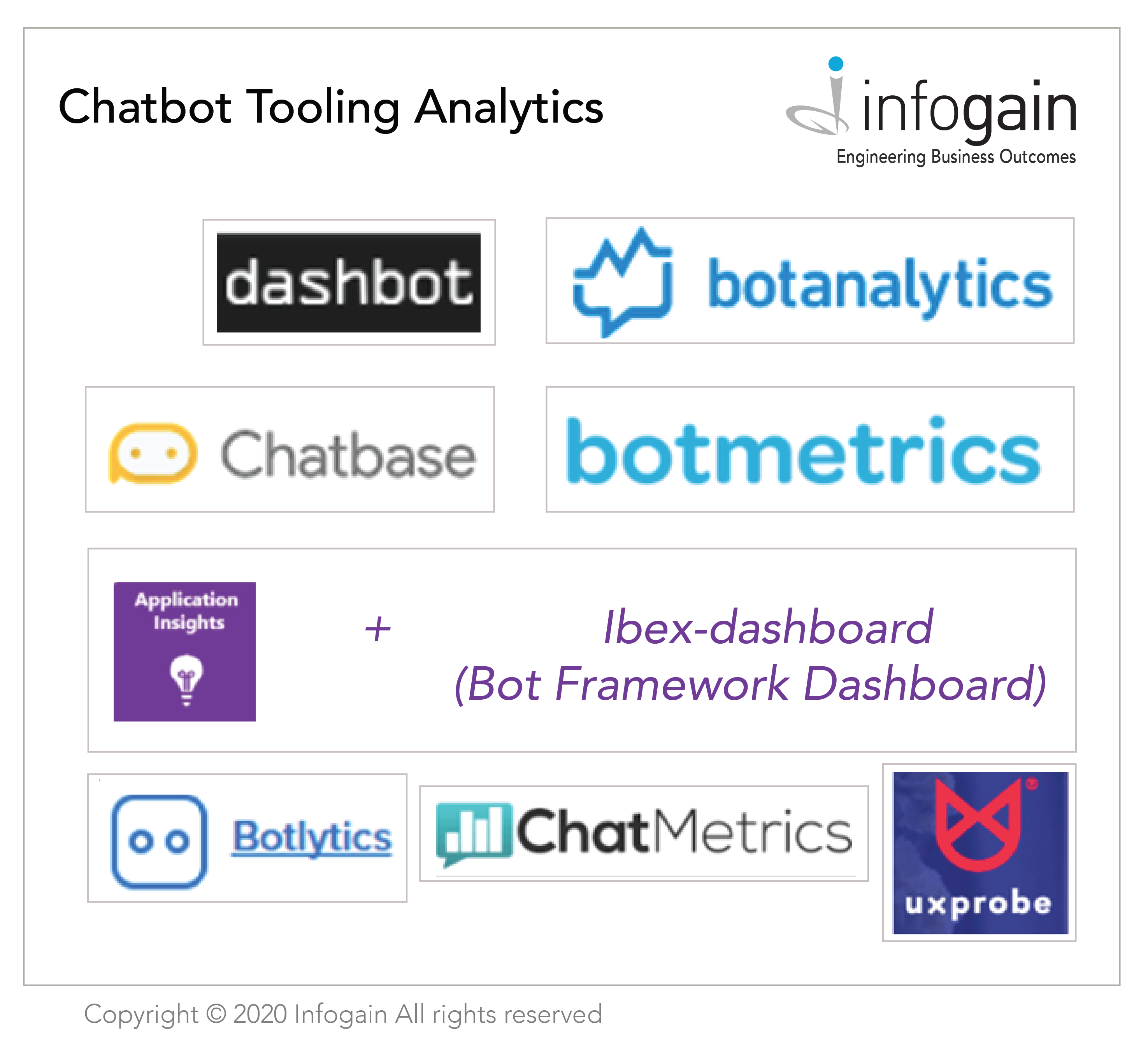
Chatbot Best Practices
What are the key benefits of Chatbots?
There are many. Chatbots:
- Are accessible 24x7
- Cost-Effective: A single bot equals multiple functionalities or employees.
- An alternate sales channel: an entire sale process can be done in chat.
- Reduce the total cost of operations
- Are efficient, working 2x-3x faster than humans
- Is an excellent Personal Assistants, Advisors, and Planners
- Automate simple, heterogeneous tasks or transactions.
- Can conduct simultaneous interactions with many people.
- A fair and uniform approach to handle and treat customers and boost customer satisfaction
Can you provide an example of a Chatbot?
Yes! Meet Nysa, Infogain’s virtual employee. She has answers to all the questions related to the Infogain ecosystem and is available 24x7x365.
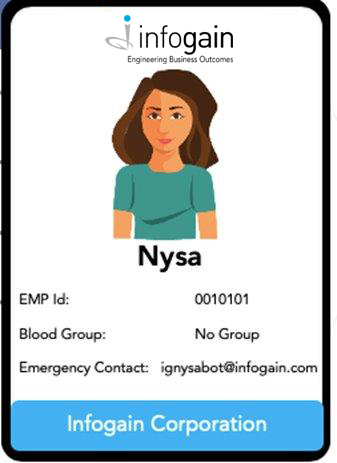
Want to learn tips for successful chatbot implementations?
Join us for our next meetup event in the Chatbot Talks series, The Art of Implementing a Conversational AI Project, on Wednesday, October 22nd from 10:00 AM – 11:00 AM EDT. Click HERE to register.

